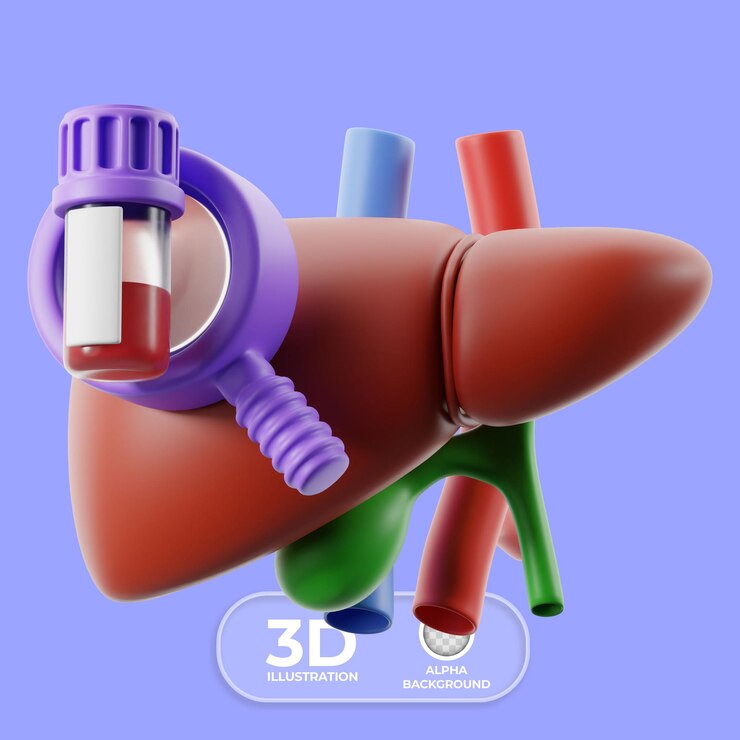
Introduction: A New Era in Surgical Planning
In the realm of hepatobiliary surgery—where complex anatomy and high-risk interventions converge—meticulous preoperative planning is essential to ensure patient safety and optimize surgical outcomes. Traditional simulation methods, relying on static or generic models, often fall short in replicating patient-specific anatomical detail. This limitation restricts their value for surgical rehearsal, especially in challenging procedures involving vascular and biliary reconstructions.1,2
With the integration of artificial intelligence (AI) and 3D printing, surgical simulation is entering a transformative era. These technologies now enable the creation of accurate, tactile, patient-specific liver models that significantly improve anatomical realism and operative planning.3,4
From Pixels to Print: How AI Enhances Surgical Simulation
AI-enhanced 3D printing has fundamentally changed the way surgical teams prepare for complex liver operations. Deep learning algorithms now automate the segmentation of CT and MRI scans, accurately identifying structures such as hepatic arteries, bile ducts, and tumors. These systems then optimize mesh generation, allowing efficient preparation of 3D-printed liver models that replicate the patient’s unique anatomy.
Compared to traditional tools like virtual reality (VR), cadaveric dissection, or textbook-based models, AI-guided 3D printing provides superior personalization. VR offers immersive visualization, and cadaveric models offer tactile realism—but none provide the customized anatomical fidelity needed for high-stakes liver resections. The result is a growing clinical interest in personalized, high-fidelity surgical rehearsal models that improve spatial awareness, reduce intraoperative risk, and enhance educational value.5,6
Evidence-Based Impact: What Recent Trials Show
A recent randomized controlled trial (RCT) assessed the impact of AI-enhanced 3D printed liver models in surgical planning. Sixty-four surgical trainees and practicing surgeons were randomized to use either AI-generated models or conventional simulation tools, including VR, 2D imaging, and textbooks. The results were striking.
Participants using AI-printed models demonstrated improved surgical accuracy, fewer intraoperative errors, and higher confidence scores. Planning time was reduced significantly—reconstruction dropped from 557 to 303 minutes, and physical models were produced within 3.5 hours at a cost of $152 each.
These models enabled more precise tumor localization, better visualization of critical vasculature, and superior estimation of liver remnant volume. This translated to fewer intraoperative adjustments (a reduction of ~15%) and an increase in R0 resection rates. In some cases, total operative time dropped by over 120 minutes, a clinically meaningful outcome in complex hepatectomies.7,8,9
Clinical Benefits and Broader Implications
The clinical value of AI-enhanced 3D models extends beyond the technical. They facilitate more informed patient discussions, empower surgical trainees with tangible, case-specific learning, and help institutions streamline resource allocation by reducing operative inefficiencies.
Importantly, AI also accelerates the production process, transforming a once time-intensive, specialist-dependent task into a scalable, accessible workflow. As the cost of 3D printing continues to fall, and as AI algorithms become more robust, the widespread adoption of these tools is becoming increasingly feasible.
Conclusion: From Innovation to Integration
AI-guided 3D printing is redefining the standards of preoperative simulation in hepatobiliary surgery. By uniting algorithmic precision with physical realism, it offers surgeons a clearer, more confident path to patient-specific planning and safer outcomes.
While further comparative studies and economic evaluations are needed to establish cost-effectiveness, the technology already signals a paradigm shift—bringing us closer to a future where personalized, data-driven surgical preparation is the norm, not the exception.
Reference:
Randomized comparison of AI enhanced 3D printing and traditional digital simulations in hepatobiliary surgery. Nat Digit Med. 2025 Jun; [PMID: 40457016].
Enhancing liver surgery and transplantation: the role of 3D printing and virtual reality. Art Int Surg. 2024 Aug;4:180-186.
Advancing precision surgery: the role of 3D printing in liver surgery. 3D Print Med. 2024; [DOI:10.1089/3dp.2024.0060].
Application of artificial intelligence in 3D printing physical organ models for surgical planning. Sci Direct. 2024; [DOI:10.1016/j.sciadv.2024.06.001].
Li L, Cheng S, Li J, Yang J, Wang H, Dong B, Yin X, Shi H, Gao S, Gu F, Han Z, Chen Z, Zhao J, Zhang Q, Cheng JZ, Wang Y, Tan F, Zhang K. Randomized comparison of AI enhanced 3D printing and traditional simulations in hepatobiliary surgery. NPJ Digit Med. 2025 Jun 2;8(1):293. doi: 10.1038/s41746-025-01571 PMID: 40457016; PMCID: PMC12130338.
Ali O, Bône A, Accardo C, Acidi B, Facque A, Valleur P, Salloum C, Rohe MM, Vignon-Clementel I, Vibert E; CHB-Surg-Group. Automatic Generation of Liver Virtual Models with Artificial Intelligence: Application to Liver Resection Complexity Prediction. Ann Surg. 2025 Apr 11. doi: 10.1097/SLA.0000000000006722. Epub ahead of print. PMID: 40211963.
Lu, Y., Chen, X., Han, F. et al. 3D printing of self-healing personalized liver models for surgical training and preoperative planning. Nat Commun 14, 8447 (2023). https://doi.org/10.1038/s41467-023-44324-6
Chatzikomnitsa P, Gkaitatzi AD, Papakonstantinou M, Louri E, Giakoustidis D, Papadopoulos VN, Giakoustidis A. The role of artificial intelligence and 3D printing in minimally invasive liver surgery. Mini-invasive Surg. 2025;9:8. http://dx.doi.org/10.20517/2574-1225.2024.78
Kasai M, Aihara T, Yamanaka N. Enhancing liver surgery and transplantation: the role of 3D printing and virtual reality. Art Int Surg. 2024;4:180-6. http://dx.doi.org/10.20517/ais.2024.07
Shi W, Wang J, Gao J, Zou X, Dong Q, Huang Z, Sheng J, Guan C, Xu Y, Cui Y, Zhong X. Utilization of 3D printing technology in hepatopancreatobiliary surgery. J Zhejiang Univ Sci B. 2024 Feb 15;25(2):123-134. doi: 10.1631/jzus.B2300175. PMID: 38303496; PMCID: PMC10835207.
Tao Lan. Advancing Precision Surgery: The Role of 3D Printing in Liver Surgery. 2025.








Post comments